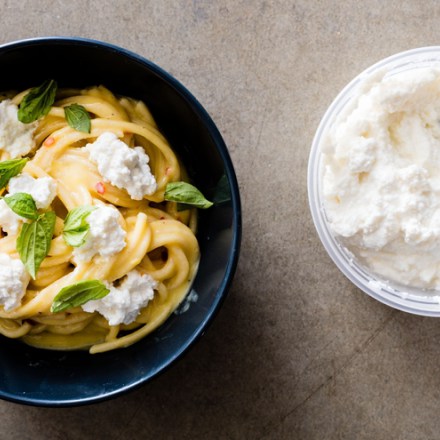Ingredients
| 2000 g | whole milk |
| 500 g | corn kernels (about 4 ears) |
| 60 g | white vinegar |
| Kosher salt and pepper | |
| 2000 g | water |
| 454 g | bucatini |
| 1 g | pepper flakes |
| 20 g | fresh basil, torn into large pieces |
| 2 quarts whole milk |
| 4 cups (18 ounces) corn kernels (about 4 ears) |
| ¼ cup white vinegar |
| Kosher salt and pepper |
| 2 quarts water |
| 1 pound bucatini |
| ¼ teaspoon pepper flakes |
| ¼ cup fresh basil, torn into large pieces |
Instructions
- 2000 g whole milk
- 500 g corn kernels (about 4 ears)
- 60 g white vinegar
- 2000 g whole milk
- Using back of ladle or rubber spatula, push corn puree through fine-mesh strainer into 12-inch skillet. Rinse and dry strainer, line with single layer of cheesecloth, and set over large Dutch oven or stockpot.
- Kosher salt
- 2000 g water
- Kosher salt
- 454 g bucatini
- 1 g pepper flakes
- Kosher salt and pepper
- 20 g fresh basil, torn into large pieces
Instructions
- 2 quarts whole milk
- 4 cups (18 ounces) corn kernels (about 4 ears)
- ¼ cup white vinegar
- 2 quarts whole milk
- Using back of ladle or rubber spatula, push corn puree through fine-mesh strainer into 12-inch skillet. Rinse and dry strainer, line with single layer of cheesecloth, and set over large Dutch oven or stockpot.
- Kosher salt
- 2 quarts water
- Kosher salt
- 1 pound bucatini
- ¼ teaspoon pepper flakes
- Kosher salt and pepper
- ¼ cup fresh basil, torn into large pieces
